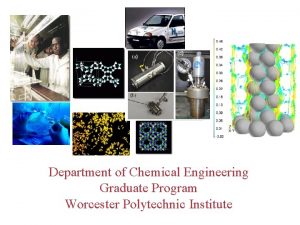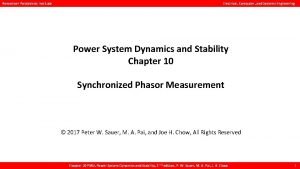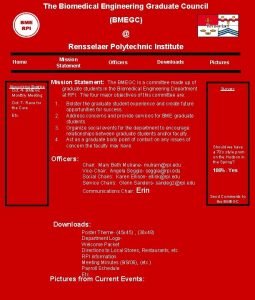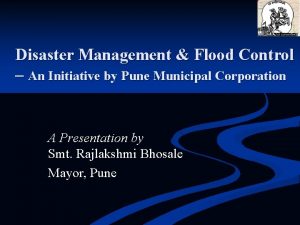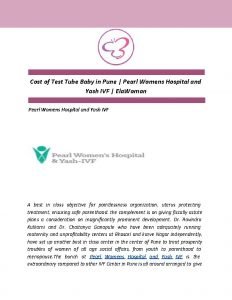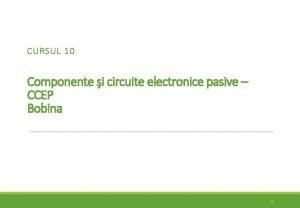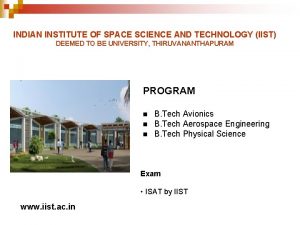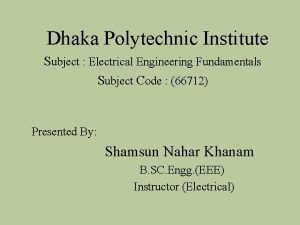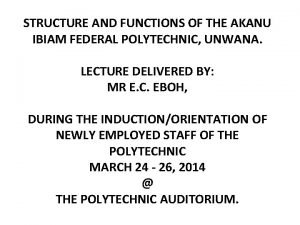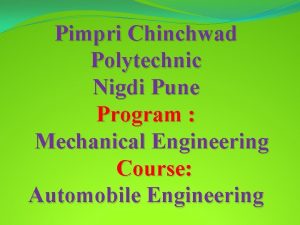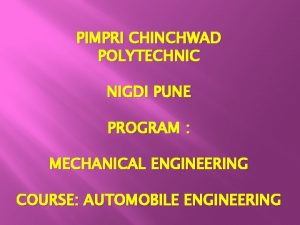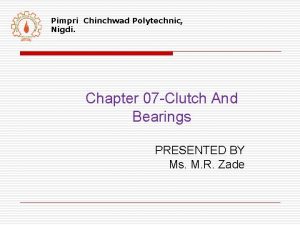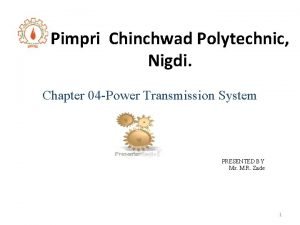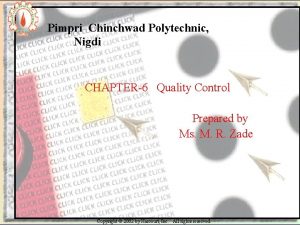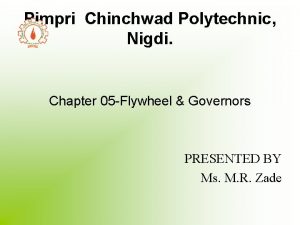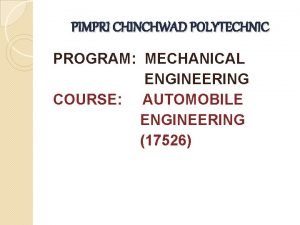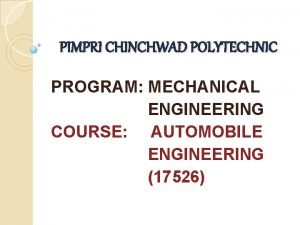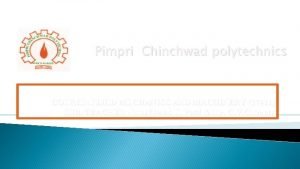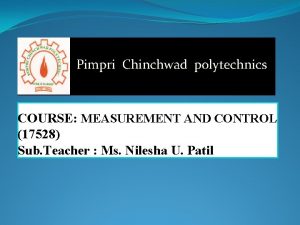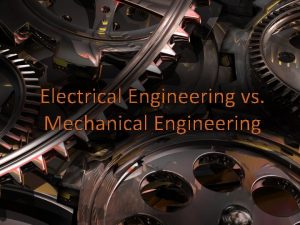PIMPRI CHINCHWAD POLYTECHNIC NIGDI PUNE PROGRAM MECHANICAL ENGINEERING































- Slides: 31

PIMPRI CHINCHWAD POLYTECHNIC NIGDI PUNE PROGRAM : MECHANICAL ENGINEERING COURSE: AUTOMOBILE ENGINEERING

CHAPTER : 3 Control System CO: Dismantle and assemble different components of automobile system.

Steering System �The steering system is a group of parts that transmit the movement of the steering wheel to the front, and sometimes the rear, wheels. The primary purpose of the steering system is to allow the driver to guide the vehicle.

Recirculating Ball Type Steering �Recirculating ball, also known as recirculating ball and nut or worm and sector, is a steering mechanism commonly found in older automobiles, off-road vehicles, and some trucks.


Recirculating Ball Type Steering �The recirculating ball steering mechanism contains a worm gear inside a block with a threaded hole in it; this block has gear teeth cut into the outside to engage the sector shaft (also called a sector gear) which moves the Pitman arm. The steering wheel connects to a shaft, which rotates the worm gear inside of the block. Instead of twisting further into the block, the worm gear is fixed so that when it spins, it moves the block, which transmits the motion through the gear to the Pitman arm, causing the road wheels to turn.

Rack And Pinion Type Steering System �A rack and pinion is a type of linear actuator that comprises a pair of gears which convert rotational motion into linear motion.

Rack And Pinion Type Steering System

Rack And Pinion Type Steering System �With either system, fluid pressure from the pump is used to push against a piston. When the wheel is turned, pressure flows to one side and the piston moves. The piston is attached to the steering gears. Hydraulic pressure does the work, and the driver controls the direction by turning the steering wheel.

Wheel Geometry �caster angle �The caster angle or castor angle is the angular displacement of the steering axis from the vertical axis of a steered wheel in a car, motorcycle, bicycle or other vehicle, measured in the longitudinal direction.

Caster Angle

Camber Angle �Camber angle is the angle made by the wheels of a vehicle; specifically, it is the angle between the vertical axis of the wheels used for steering and the vertical axis of the vehicle when viewed from the front or rear. It is used in the design of steering and suspension.

Camber Angle

Kingpin Inclination �The kingpin inclination is the angle, measured in degrees, that forms the line passing through the kingpin and the perpendicular to the ground, looking at the vehicle from the front,

Kingpin Inclination

Toe-in �A small amount of toe-in will make the car more stable on a straight road but just a bit less responsive turning into the corners. �If a car has toe-in, it means that the front edges of the wheels are closer to each other than the rear edges.

Toe-in & Toe-out

Toe-out �Toe-out describes the setting of a pair of wheels on an axle in which the edge of each wheel is inclined slightly outward.

Braking System �A brake is a mechanical device that inhibits motion by absorbing energy from a moving system. It is used for slowing or stopping a moving vehicle.

Types Of Automotive Braking Systems �Disc Brakes �Drum Brakes �Hydraulic Brakes �Antilock Braking System (ABS) �Air Brakes �Parking Brake �Mechanical Brake

Hydraulic Braking System �A hydraulic braking system transmits brake -pedal force to the wheel brakes through pressurized fluid, converting the fluid pressure into useful work of braking at the wheels. A simple, single-line hydraulic layout used to operate a drum and disc brake system

Hydraulic Braking System

Hydraulic Disc Braking System

Hydraulic Disc Braking System �A disc brake is a type of brake that uses calipers to squeeze pairs of pads against a rotor (or "disc") in order to create friction that retards the rotation of a shaft, such as a vehicle axle, either to reduce its rotational speed or to hold it stationary.

Hydraulic Drum Braking System

Hydraulic Drum Braking System �Drum Brakes. A drum brake system consists of hydraulic wheel cylinders, brake shoes and a brake drum. When the brake pedal is applied the two curved brake shoes, which have a friction material lining, are forced by hydraulic wheel cylinders against the inner surface of a rotating brake drum.

Master Cylinder

Master Cylinder �In automotive engineering, the master cylinder is a control device that converts non-hydraulic pressure (commonly from a driver's foot) into hydraulic pressure. This device controls slave cylinders located at the other end of the hydraulic system.

Master Cylinder �As piston(s) move along the bore of the master cylinder, this movement is transferred through the hydraulic fluid, to result in a movement of the slave cylinder(s). The hydraulic pressure created by moving a piston (inside the bore of the master cylinder) toward the slave cylinder(s) compresses the fluid evenly

Air Braking System �An air brake is a type of friction brake for vehicles in which compressed air pressing on a piston is used to apply the pressure to the brake pad needed to stop the vehicle. Air brakes are used in large heavy vehicles, particularly those having multiple trailers which must be linked into the brake system, such as trucks, buses, trailers, and semitrailers

Air Braking System
 Lokmanya orthopedic hospital pune
Lokmanya orthopedic hospital pune Worcester polytechnic institute chemical engineering
Worcester polytechnic institute chemical engineering Rensselaer polytechnic institute electrical engineering
Rensselaer polytechnic institute electrical engineering Rensselaer polytechnic institute biomedical engineering
Rensselaer polytechnic institute biomedical engineering Electronic engineering polytechnic institute of surabaya
Electronic engineering polytechnic institute of surabaya Actual mechanical advantage vs ideal mechanical advantage
Actual mechanical advantage vs ideal mechanical advantage Welcome to pune in marathi
Welcome to pune in marathi Siguria ne pune projekt
Siguria ne pune projekt Pune, india, has tried to increase its rainfall by
Pune, india, has tried to increase its rainfall by E dictate
E dictate Flood control pune
Flood control pune Ddhs pune
Ddhs pune Sadhana vidyalaya hadapsar pune 28
Sadhana vidyalaya hadapsar pune 28 German language institute in pune
German language institute in pune Test tube baby cost in pune
Test tube baby cost in pune Urethra
Urethra Sciedge
Sciedge Inductanta magnetica
Inductanta magnetica Sm joshi college pune
Sm joshi college pune Pune me projekt
Pune me projekt Om chambers bhosari
Om chambers bhosari Afosop pune
Afosop pune Indian institute of space science and technology
Indian institute of space science and technology Pune branch of wirc
Pune branch of wirc Jhenaidah polytechnic institute
Jhenaidah polytechnic institute North coast polytechnic
North coast polytechnic Lviv polytechnic university
Lviv polytechnic university Grade 11 in belgium
Grade 11 in belgium Dhaka polytechnic institute code
Dhaka polytechnic institute code Chandil polytechnic
Chandil polytechnic Army polytechnic school
Army polytechnic school Organogram of a polytechnic
Organogram of a polytechnic

